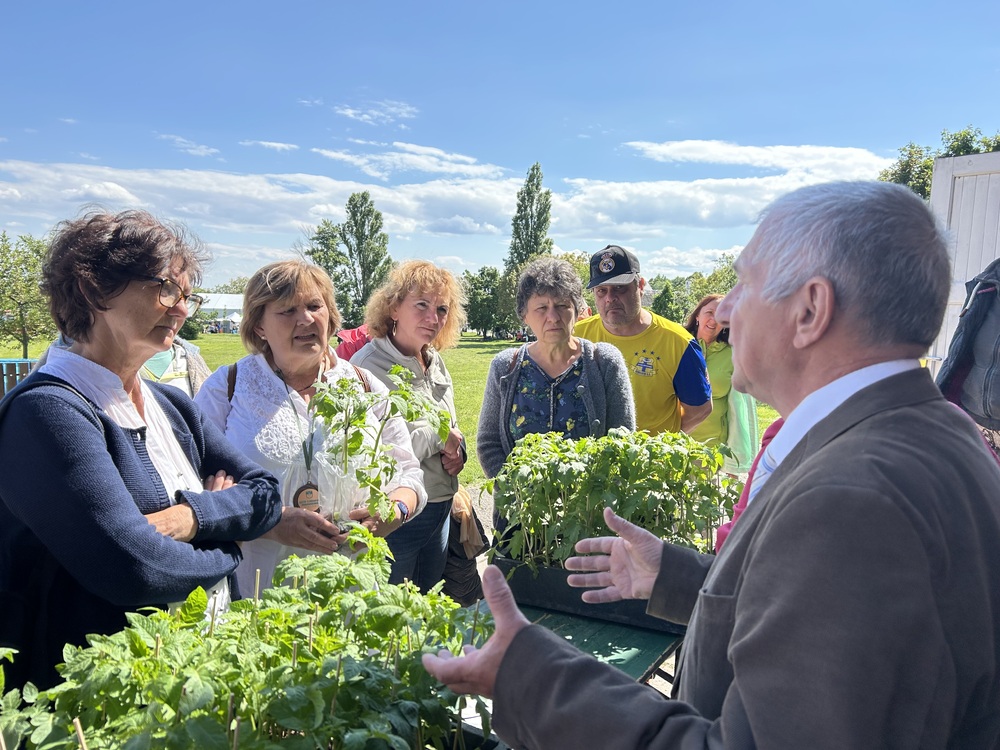site.btaBulgarian Model Garden to Be Created in Hungary’s Skanzen Open-Air Ethnographic Museum


A meeting of civil organizations in Hungary took place in the Open-Air Ethnographic Museum in Szentendre (Skanzen), which was also attended by Hungarian organizations from the Carpathian Basin. More than 600 organizations took part in the forum, which was opened by Prime Minister’s Chef de cabinet Gergely Gulyas. Among them, the Bulgarian community in Hungary took a special place, Svetla Kyoseva, editor-in-chief of the bilingual culture and public life magazine Hemus, told BTA's BG World on Tuesday.
Just a couple of days ago, documents were officially submitted for adding for the inscription of the Tradition of Bulgarian Gardeners in Hungary in the UNESCO National Register of Intangible Cultural Heritage - Hungary.
At the invitation of the Skanzen management, a Bulgarian model garden will be created on its territory and Bulgarian gardening will be included in the various programmes of the museum - activities with schoolchildren, workshops, conferences, etc. The Bulgarian community is committed to maintaining the garden and providing materials for the creation of an exhibition dedicated to Bulgarian gardening, Svetla Kyoseva explained.
The Director General of the institution, Dr. Miklos Cseri, and 50 staff members of the museum received the representatives of the Bulgarian community. They listened with interest to the presentation of the project and concrete steps for its implementation were immediately outlined.
A report by Dr. Yordan Tyutyunkov on Bulgarian horticulture, its role in various aspects of Hungarian economic, social and cultural life, as well as its contemporary manifestations was presented.
Bulgarian gardeners have established themselves as the most important producers of vegetables thanks to a new technology of intensive irrigated farming, to the cooperative organization of work which makes every member of the enterprise interested, to their commercial contacts and their presence on the markets. Agricultural specialists and agricultural researchers have devoted their works to Bulgarian horticulture and have tried to introduce it to the Hungarian peasantry. One of the largest agricultural farms in Europe, the Arpad agricultural co-operative in Szentes, still claims to this day that it owes its success to the adoption of Bulgarian methods of vegetable growing.
Bulgarian vegetables modified Hungarian cuisine, one of the most popular dishes - lecso - spread after peppers and tomatoes became an integral part of culinary culture. And Nobel laureate Albert Szent-Gyorgyi extracted vitamin C from peppers cultivated by Bulgarian gardeners.
After the lecture, seedlings of tomatoes of the "Pink Magic" variety, grown in the Arpad co-operative with seeds from Bulgaria, were distributed, to which great interest was shown, Kyoseva said, as well as leaflets with tips on growing them and a few Bulgarian recipes.
The decision for the inclusion of Bulgarian horticulture in Hungary in the UNESCO national list of intangible cultural heritage will be announced in the autumn and will be announced on International Intangible Cultural Heritage Day on October 17.
/PP/
news.modal.header
news.modal.text